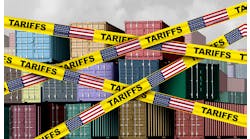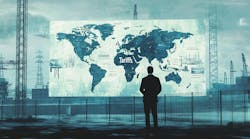On November 7th Super Typhoon Haiyan made landfall in the Philippines, and also made its mark in the record books as one of the largest and deadliest storms ever recorded. Relief efforts have only just begun and the calamity’s toll isn’t even known yet. While aid from the United States and other countries began to flow in on Monday, getting supplies into the affected areas is still a challenge, since roads are blocked by debris and airports are shut down.
The American Logistics Aid Network (ALAN) is supporting U.S. domestic logistics requests, including requests for transportation and warehouse space. ALAN is working closely with the U.S. arms of partner agencies to determine what resources are most needed. Right now it anticipates a need for warehouse space near U.S. West Coast air and sea ports, and is making connections on behalf of relief organizations and businesses seeking to help.
ALAN is also working with a medical surplus recycling organization to transport water purification systems to the airport in Houston, and it is helping coordinate the shipment of one million donated surgical masks from St. Louis, MO.
The Procurement and Supply Institute of Asia (PASIAworld) will hold its annual conference on November 21 and 22; they expect some 200 supply chain companies to attend the event at the Marriott Hotel in Manila. ALAN has connected PASIAworld and a Louisiana disaster management think tank for a possible collaboration for that conference to share lessons learned and to strengthen the Philippines’ emergency management network.
Businesses wishing to offer support can contact [email protected] or [email protected], or view appeals posted on the ALAN portal. The current needs include product-related requests for generators, food, household supplies, tarps, and other goods. Because needs are still emerging, stay tuned to www.ALANAid.org, to follow developments over the coming days and weeks as they navigate what promises to be an extremely challenging recovery period.
ALAN also reminds donors to speak directly with any aid groups they consider helping. Find out precisely what they need, where it needs to go, and how you can get it to them.
“Sending supplies from the U.S. is costly and slow,” ALAN states. “Many organizations prefer cash so they can buy supplies locally; doing so will help the Philippine economy recover quickly.”


